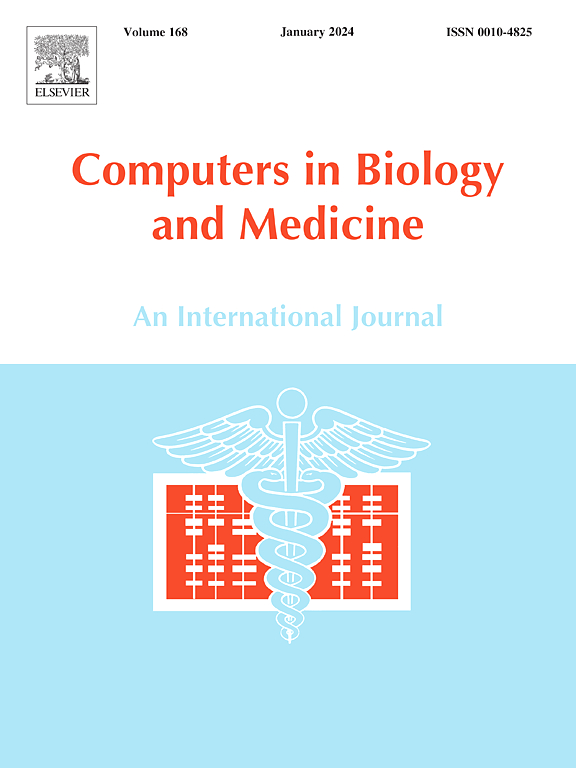关注早期阶段:使用包容性事件时间模型预测心脏手术后ICU环境中的急性肾损伤
IF 6.3
2区 医学
Q1 BIOLOGY
引用次数: 0
摘要
背景:急性肾损伤(AKI)是重症监护病房(icu)的一种重要并发症,具有多方面的影响。然而,由于AKI往往发现得太晚,早期预测对于及时干预至关重要。方法:我们使用基于注意力的时间-事件模型来估计心脏手术后ICU环境中患者首次AKI发生率的风险,而不考虑通常采用的限制,例如关注严重阶段(2 &;3). 纳入了来自8564名成年患者的术前、术中和术后数据,AKI的定义遵循完整的肾脏疾病:改善全球结局(KDIGO)定义。结果70.4%的患者发展为AKI,以1期为最常见的初始阶段(88.1%)。基于注意力的网络优于我们的基线模型,在发病前6、12和24小时对事件风险进行排序的ci分别为0.80、0.72和0.69。在将任务转换为分类问题以进行文献比较方面,我们获得了接收者算子特征曲线(auroc)下的面积为0.82-0.73。仅在严重的AKIs中,性能得到改善,ci为0.92,0.85和0.75,auroc在0.94和0.78之间。结论:我们证明了早期AKI预测的重要性,并提出了一种新的方法来实现这一目标。在类似的假设下,我们的结果显示出改善,接近文献可比的结果。虽然实际验证尚待验证,但我们相信我们的方法在帮助医生预防AKI发展方面是有用的。本文章由计算机程序翻译,如有差异,请以英文原文为准。

Attention to early stages: predicting acute kidney injury in a post cardiosurgical ICU setting using an inclusive time-to-event model
Background
Acute kidney injury (AKI) is a critical complication in intensive care units (ICUs) that is known to have multifaceted impacts. However, as AKI is often detected too late, early prediction is crucial for timely intervention.
Methods
We used an attention-based time-to-event model to estimate the risk of a patient's first AKI incidence in a post-cardiosurgical ICU setting, irrespective of commonly employed limitations such as focusing on severe stages (2 & 3). Pre-, intra-, and postoperative data from 8564 adult patients were included, and AKI was defined by adhering to the full Kidney Disease: Improving Global Outcomes (KDIGO) definition. Models were primarily evaluated using the concordance index (CI).
Results
70.4 % of patients developed AKI, with stage 1 being the most frequent initial stage (88.1 %). The attention-based network outperformed our baseline model, achieving CIs of 0.80, 0.72, and 0.69 for ranking event risks up to 6, 12, and 24 h prior to the onset. In terms of converting the task to a classification problem for literature comparison, we obtained areas under the receiver operator characteristic curve (auROCs) of 0.82–0.73. Performance improved for severe AKIs only, yielding CIs of 0.92, 0.85, and 0.75, and auROCs ranging between 0.94 and 0.78.
Conclusion
We demonstrated the importance of early-stage AKI predictions and presented a novel approach to achieve this. Under similar assumptions, our results showed improvement and approached outcomes comparable to the literature. While practical validation is pending, we are confident that our approach proves useful in assisting physicians to prevent AKI development.
求助全文
通过发布文献求助,成功后即可免费获取论文全文。
去求助
来源期刊

Computers in biology and medicine
工程技术-工程:生物医学
CiteScore
11.70
自引率
10.40%
发文量
1086
审稿时长
74 days
期刊介绍:
Computers in Biology and Medicine is an international forum for sharing groundbreaking advancements in the use of computers in bioscience and medicine. This journal serves as a medium for communicating essential research, instruction, ideas, and information regarding the rapidly evolving field of computer applications in these domains. By encouraging the exchange of knowledge, we aim to facilitate progress and innovation in the utilization of computers in biology and medicine.
 求助内容:
求助内容: 应助结果提醒方式:
应助结果提醒方式:


